Instruction
Does posture really matter in putting?
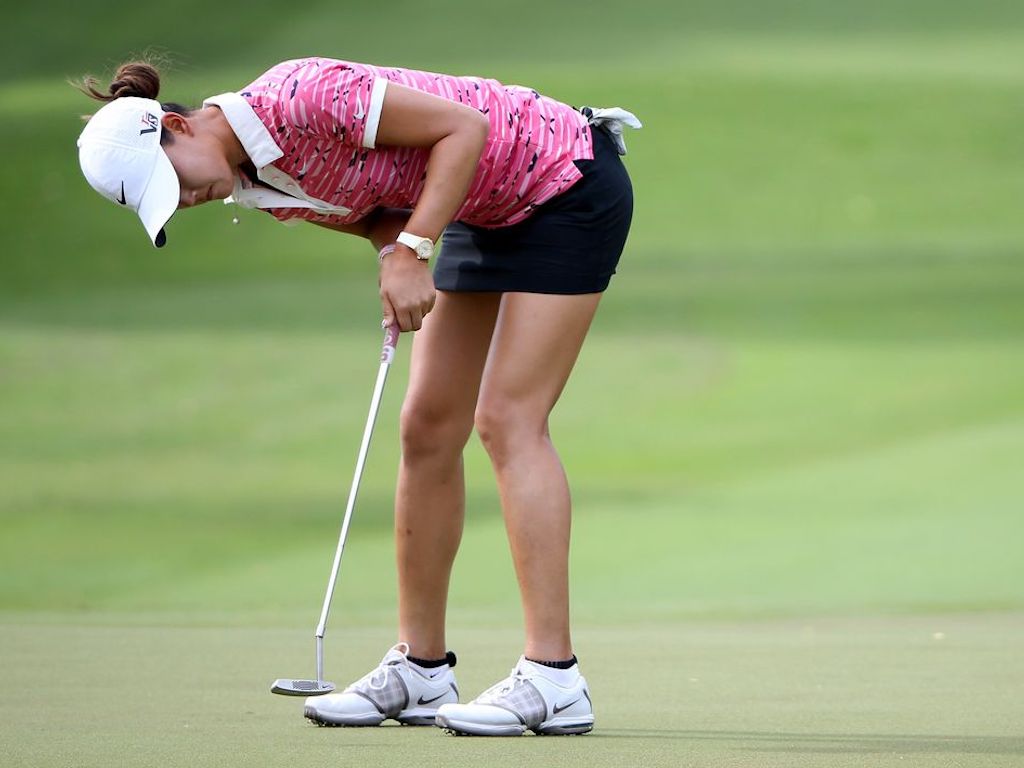
This article is co-authored with James Jankowski. James is a specialist putting coach to over 100 professional golfers and has worked with around 1000 recreational golfers. You can check out his website here and instagram page here.
When it comes to the motion we produce when putting, the fewer moving parts we have, the easier it becomes to control the putter. From a mechanical standpoint, I try to get golfers forgetting about how or where the putter is moving, and more about the movement of their body. Good body biomechanics will ensure the putter travels where it needs to, without much conscious control.
For me, it seems obvious that the most consistent way to putt would be using a technique that limits the amount of rotating parts of the body, to just one if possible. This one moving part should be in a central position in relation to the rest of our body (more on that later) and aligned with where the shaft plane points for most golfers (see image below). Therefore, where better to control the putting motion than our thoracic spine, specifically the middle/upper section, vertebrae T3 – T6 (approximately).
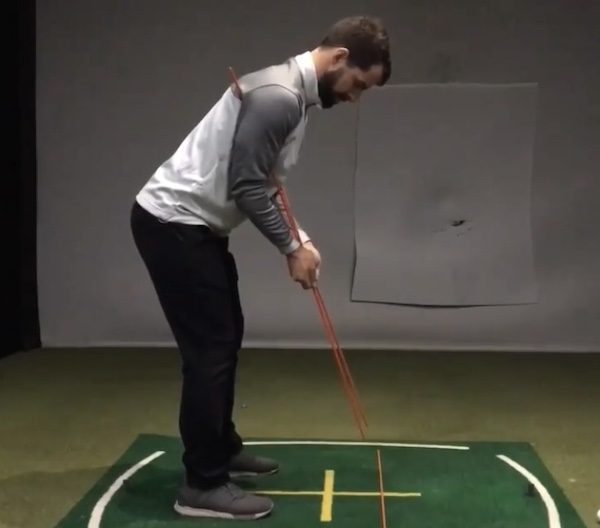
Thoracic spine aligned with where the shaft plane points
So, if our main driver of motion is our mid to upper back, then it makes sense that overall spinal posture plays a hugely important role. Good posture encourages a stronger and more stable upper body, better connection with the arms and body (shoulder stability and control), plus a greater ability for us to rotate through our thoracic spine. When poor posture limits our ability to turn properly we will often find an alternative way to control the motion. Most of the time, the stroke becomes a swing of the arms, with disconnection from the body and more difficulty in controlling the putter.
So how can we improve our posture for putting?
Firstly, through general improvement of our own natural posture with gym work and posture based exercises. One good example for golfers, especially those who work in an office, is ensuring their pec minor muscles aren’t too tight. Stretching this muscle (doorway stretch as pictured is a great one) and/or self-massage with a tennis or massage ball will help keep it in a lengthened state. Golfers should also consider strengthening the muscles around the shoulder and scapula to help hold them in better posture automatically.
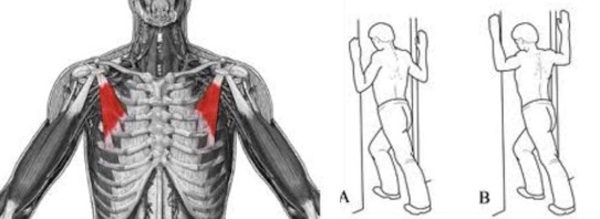
Pec Minor and the doorway stretch
Secondly, I feel many golfers do not understand the feeling of good posture and how to maintain it throughout the putting stroke (or the golf swing for that matter). For this reason, I have started using the Gravity Fit TPro in so many of my lessons, often leading to fantastic results and dramatic improvements. It provides golfers with feedback on the correct position and posture at both setup and throughout the motion. Rather than bore you too much with the written detail, I would like to instead share a couple of examples, both using data collected using the excellent CAPTO system to demonstrate improvements. For those that haven’t heard of Capto, it is the latest in putting analysis software, measuring all putter parameters imaginable.
Example 1 – Before – with the golfer in poor posture, they were forced into an arm swing type motion, with a high amount of face rotation and poor control of acceleration. You will see the center of rotation at the top of the arms and a center that isn’t very stable (green ball is larger in size.) Following some education of better posture using the TPro, the very first stroke was captured. The improvements were instant. A center of motion (based on the plane of the putter) now at the thoracic spine, increased stability (green ball smaller) and face rotation decreased dramatically. All of this on the very first putt!

Example 1 – Posture Improvements
Example 2 – Before – poor control of acceleration in the putter. The golfer found it difficult to control both the amount of acceleration and also its application within the stroke. Following some education of posture using the TPro, plus some rehearsals of the correct motion, the golfer was able to smoothly accelerate at the correct points in the stroke, showing a remarkable improvement in their acceleration profile. On the graph seen here, the ‘perfect’ acceleration profile would follow the green line. You will see here how much closer the golfer was to achieving this.

Example 2 – Acceleration Improvements
This is what the difference between the two setups and strokes might look like in the flesh
The above examples demonstrate how a putting stroke can improve dramatically when we focus on controlling the movement from the thoracic spine (instead of from the shoulders and arms). The Gravity Fit TPro was a critical aspect in making that change, due to the instant feedback it provided on posture and also movement quality. I’ve also seen this approach scale up to short game and full swing in exactly the same way.
You can check out James’ great putting content on a number of different mediums:
The equipment featured can be found here for GravityFit or here for CAPTO. James is more than happy to field inquiries on CAPTO systems by email
- LIKE27
- LEGIT2
- WOW3
- LOL2
- IDHT1
- FLOP4
- OB3
- SHANK32
Instruction
The Wedge Guy: The easiest-to-learn golf basic

My golf learning began with this simple fact – if you don’t have a fundamentally sound hold on the golf club, it is practically impossible for your body to execute a fundamentally sound golf swing. I’m still a big believer that the golf swing is much easier to execute if you begin with the proper hold on the club.
As you might imagine, I come into contact with hundreds of golfers of all skill levels. And it is very rare to see a good player with a bad hold on the golf club. There are some exceptions, for sure, but they are very few and very far between, and they typically have beat so many balls with their poor grip that they’ve found a way to work around it.
The reality of biophysics is that the body moves only in certain ways – and the particulars of the way you hold the golf club can totally prevent a sound swing motion that allows the club to release properly through the impact zone. The wonderful thing is that anyone can learn how to put a fundamentally sound hold on the golf club, and you can practice it anywhere your hands are not otherwise engaged, like watching TV or just sitting and relaxing.
Whether you prefer an overlap, interlock or full-finger (not baseball!) grip on the club, the same fundamentals apply. Here are the major grip faults I see most often, in the order of the frequency:
Mis-aligned hands
By this I mean that the palms of the two hands are not parallel to each other. Too many golfers have a weak left hand and strong right, or vice versa. The easiest way to learn how to hold the club with your palms aligned properly is to grip a plain wooden ruler or yardstick. It forces the hands to align properly and shows you how that feels. If you grip and re-grip a yardstick several times, then grip a club, you’ll see that the learning curve is almost immediate.
The position of the grip in the upper/left hand
I also observe many golfers who have the butt of the grip too far into the heel pad of the upper hand (the left hand for right-handed players). It’s amazing how much easier it is to release the club through the ball if even 1/4-1/2″ of the butt is beyond the left heel pad. Try this yourself to see what I mean. Swing the club freely with just your left hand and notice the difference in its release from when you hold it at the end of the grip, versus gripping down even a half inch.
To help you really understand how this works, go to the range and hit shots with your five-iron gripped down a full inch to make the club the same length as your seven-iron. You will probably see an amazing shot shape difference, and likely not see as much distance loss as you would expect.
Too much lower (right) hand on the club
It seems like almost all golfers of 8-10 handicap or higher have the club too far into the palm of the lower hand, because that feels “good” if you are trying to control the path of the clubhead to the ball. But the golf swing is not an effort to hit at the ball – it is a swing of the club. The proper hold on the club has the grip underneath the pad at the base of the fingers. This will likely feel “weak” to you — like you cannot control the club like that. EXACTLY. You should not be trying to control the club with your lower/master hand.
Gripping too tightly
Nearly all golfers hold the club too tightly, which tenses up the forearms and prevents a proper release of the club through impact. In order for the club to move back and through properly, you must feel that the club is controlled by the last three fingers of the upper hand, and the middle two fingers of the lower hand. If you engage your thumbs and forefingers in “holding” the club, the result will almost always be a grip that is too tight. Try this for yourself. Hold the club in your upper hand only, and squeeze firmly with just the last three fingers, with the forefinger and thumb off the club entirely. You have good control, but your forearms are not tense. Then begin to squeeze down with your thumb and forefinger and observe the tensing of the entire forearm. This is the way we are made, so the key to preventing tenseness in the arms is to hold the club very lightly with the “pinchers” — the thumbs and forefingers.
So, those are what I believe are the four fundamentals of a good grip. Anyone can learn them in their home or office very quickly. There is no easier way to improve your ball striking consistency and add distance than giving more attention to the way you hold the golf club.
More from the Wedge Guy
- The Wedge Guy: Golf mastery begins with your wedge game
- The Wedge Guy: Why golf is 20 times harder than brain surgery
- The Wedge Guy: Musings on the golf ball rollback
- LIKE79
- LEGIT13
- WOW4
- LOL1
- IDHT0
- FLOP4
- OB1
- SHANK8
Instruction
Clement: Stop ripping off your swing with this drill!

Not the dreaded headcover under the armpit drill! As if your body is defective and can’t function by itself! Have you seen how incredible the human machine is with all the incredible feats of agility all kinds of athletes are accomplishing? You think your body is so defective (the good Lord is laughing his head off at you) that it needs a headcover tucked under the armpit so you can swing like T-Rex?
- LIKE0
- LEGIT1
- WOW2
- LOL0
- IDHT0
- FLOP0
- OB0
- SHANK2
Instruction
How a towel can fix your golf swing

This is a classic drill that has been used for decades. However, the world of marketed training aids has grown so much during that time that this simple practice has been virtually forgotten. Because why teach people how to play golf using everyday items when you can create and sell a product that reinforces the same thing? Nevertheless, I am here to give you helpful advice without running to the nearest Edwin Watts or adding something to your Amazon cart.
For the “scoring clubs,” having a solid connection between the arms and body during the swing, especially through impact, is paramount to creating long-lasting consistency. And keeping that connection throughout the swing helps rotate the shoulders more to generate more power to help you hit it farther. So, how does this drill work, and what will your game benefit from it? Well, let’s get into it.
Setup
You can use this for basic chip shots up to complete swings. I use this with every club in my bag, up to a 9 or 8-iron. It’s natural to create incrementally more separation between the arms and body as you progress up the set. So doing this with a high iron or a wood is not recommended.
While you set up to hit a ball, simply tuck the towel underneath both armpits. The length of the towel will determine how tight it will be across your chest but don’t make it so loose that it gets in the way of your vision. After both sides are tucked, make some focused swings, keeping both arms firmly connected to the body during the backswing and follow through. (Note: It’s normal to lose connection on your lead arm during your finishing pose.) When you’re ready, put a ball in the way of those swings and get to work.

Get a Better Shoulder Turn
Many of us struggle to have proper shoulder rotation in our golf swing, especially during long layoffs. Making a swing that is all arms and no shoulders is a surefire way to have less control with wedges and less distance with full swings. Notice how I can get in a similar-looking position in both 60° wedge photos. However, one is weak and uncontrollable, while the other is strong and connected. One allows me to use my larger muscles to create my swing, and one doesn’t. The follow-through is another critical point where having a good connection, as well as solid shoulder rotation, is a must. This drill is great for those who tend to have a “chicken wing” form in their lead arm, which happens when it becomes separated from the body through impact.
In full swings, getting your shoulders to rotate in your golf swing is a great way to reinforce proper weight distribution. If your swing is all arms, it’s much harder to get your weight to naturally shift to the inside part of your trail foot in the backswing. Sure, you could make the mistake of “sliding” to get weight on your back foot, but that doesn’t fix the issue. You must turn into your trial leg to generate power. Additionally, look at the difference in separation between my hands and my head in the 8-iron examples. The green picture has more separation and has my hands lower. This will help me lessen my angle of attack and make it easier to hit the inside part of the golf ball, rather than the over-the-top move that the other picture produces.


Stay Better Connected in the Backswing
When you don’t keep everything in your upper body working as one, getting to a good spot at the top of your swing is very hard to do. It would take impeccable timing along with great hand-eye coordination to hit quality shots with any sort of regularity if the arms are working separately from the body.
Notice in the red pictures of both my 60-degree wedge and 8-iron how high my hands are and the fact you can clearly see my shoulder through the gap in my arms. That has happened because the right arm, just above my elbow, has become totally disconnected from my body. That separation causes me to lift my hands as well as lose some of the extension in my left arm. This has been corrected in the green pictures by using this drill to reinforce that connection. It will also make you focus on keeping the lead arm close to your body as well. Because the moment either one loses that relationship, the towel falls.


Conclusion
I have been diligent this year in finding a few drills that target some of the issues that plague my golf game; either by simply forgetting fundamental things or by coming to terms with the faults that have bitten me my whole career. I have found that having a few drills to fall back on to reinforce certain feelings helps me find my game a little easier, and the “towel drill” is most definitely one of them.
- LIKE11
- LEGIT1
- WOW2
- LOL0
- IDHT0
- FLOP2
- OB0
- SHANK8
-

 19th Hole1 week ago
19th Hole1 week agoJohn Daly stuns fans into silence with brutal opening tee shot on PGA Tour Champions
-

 19th Hole2 weeks ago
19th Hole2 weeks ago2-time major champ announces shock retirement from the sport at age of 33
-

 19th Hole1 week ago
19th Hole1 week agoCharlie Woods finds it tough going on American Junior Golf Association debut
-

 19th Hole2 weeks ago
19th Hole2 weeks agoEdoardo Molinari reveals the latest PGA Tour golfer to turn down ‘good offer’ from LIV Golf
-

 Equipment3 weeks ago
Equipment3 weeks agoBest driver 2024: The best driver for you, as recommend by expert club fitters
-

 19th Hole2 weeks ago
19th Hole2 weeks agoScottie Scheffler had an interesting response when asked how he ‘quiets the noise’ following Players victory
-

 19th Hole2 weeks ago
19th Hole2 weeks agoJon Rahm dealt fresh blow to hopes of qualifying for 2025 Ryder Cup
-
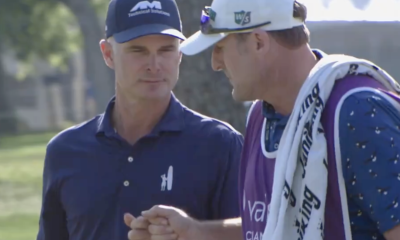
 19th Hole1 week ago
19th Hole1 week agoWhy Kevin Streelman sought USGA approval to use this equipment tool as he leads Valspar after round one













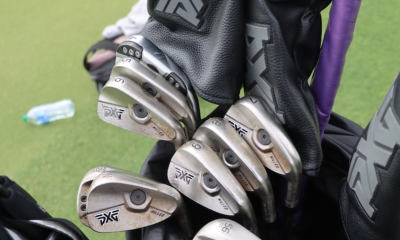

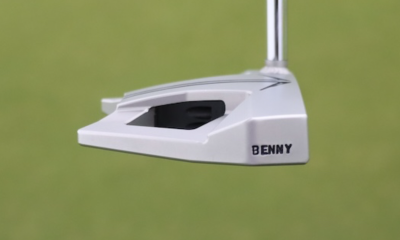

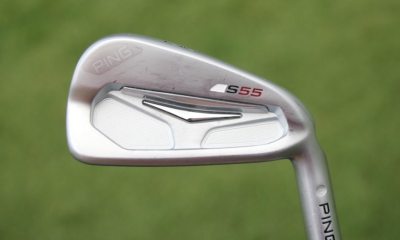

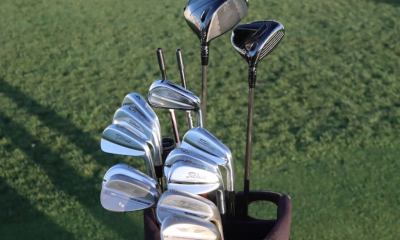

RBImGuy
Apr 24, 2019 at 2:53 pm
waste of space
Mark
Apr 6, 2019 at 2:47 am
How is this different from the proven approach of keeping the hands and arms quiet and simply rocking the shoulders around the spine?
Scott
Apr 6, 2019 at 1:53 am
This is a click bait add for a product. Wasted my time
Sal
Apr 5, 2019 at 7:12 pm
Tell Ben Crenshaw.
Bob Jones
Apr 5, 2019 at 6:52 pm
This is an internal focus approach that research is showing to be backwards. See the research of Gabrielle Wulf at UNLV.
geohogan
Apr 8, 2019 at 11:15 am
The putter is a lever, like every golf club.
Impact of a putt is 1/1000 second for a distance of 1/4 inch.
Why would we use our strongest back and core muscle and so much torso movement when such a minuscule amount of force is required for such a brief duration.